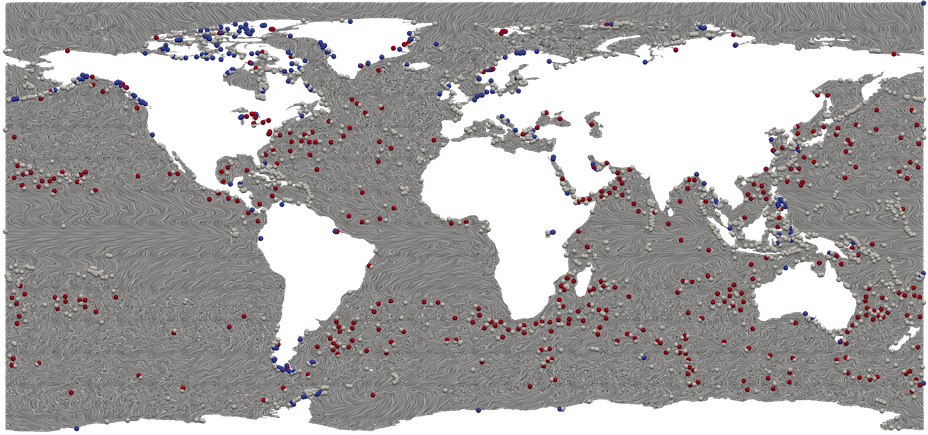Localized Evaluation for Constructing Discrete Vector Fields
Tanner Finken - University of Arizona, Tucson, United States
Julien Tierny - Sorbonne Université, Paris, France
Joshua A Levine - University of Arizona, Tucson, United States
Download preprint PDF
Room: Bayshore VI
2024-10-18T12:42:00ZGMT-0600Change your timezone on the schedule page
2024-10-18T12:42:00Z

Fast forward
Full Video
Keywords
Flow visualization, discrete Morse theory, topological data analysis
Abstract
Topological abstractions offer a method to summarize the behavior of vector fields, but computing them robustly can be challenging due to numerical precision issues. One alternative is to represent the vector field using a discrete approach, which constructs a collection of pairs of simplices in the input mesh that satisfies criteria introduced by Forman’s discrete Morse theory. While numerous approaches exist to compute pairs in the restricted case of the gradient of a scalar field, state-of-the-art algorithms for the general case of vector fields require expensive optimization procedures. This paper introduces a fast, novel approach for pairing simplices of two-dimensional, triangulated vector fields that do not vary in time. The key insight of our approach is that we can employ a local evaluation, inspired by the approach used to construct a discrete gradient field, where every simplex in a mesh is considered by no more than one of its vertices. Specifically, we observe that for any edge in the input mesh, we can uniquely assign an outward direction of flow. We can further expand this consistent notion of outward flow at each vertex, which corresponds to the concept of a downhill flow in the case of scalar fields. Working with outward flow enables a linear-time algorithm that processes the (outward) neighborhoods of each vertex one-by-one, similar to the approach used for scalar fields. We couple our approach to constructing discrete vector fields with a method to extract, simplify, and visualize topological features. Empirical results on analytic and simulation data demonstrate drastic improvements in running time, produce features similar to the current state-of-the-art, and show the application of simplification to large, complex flows